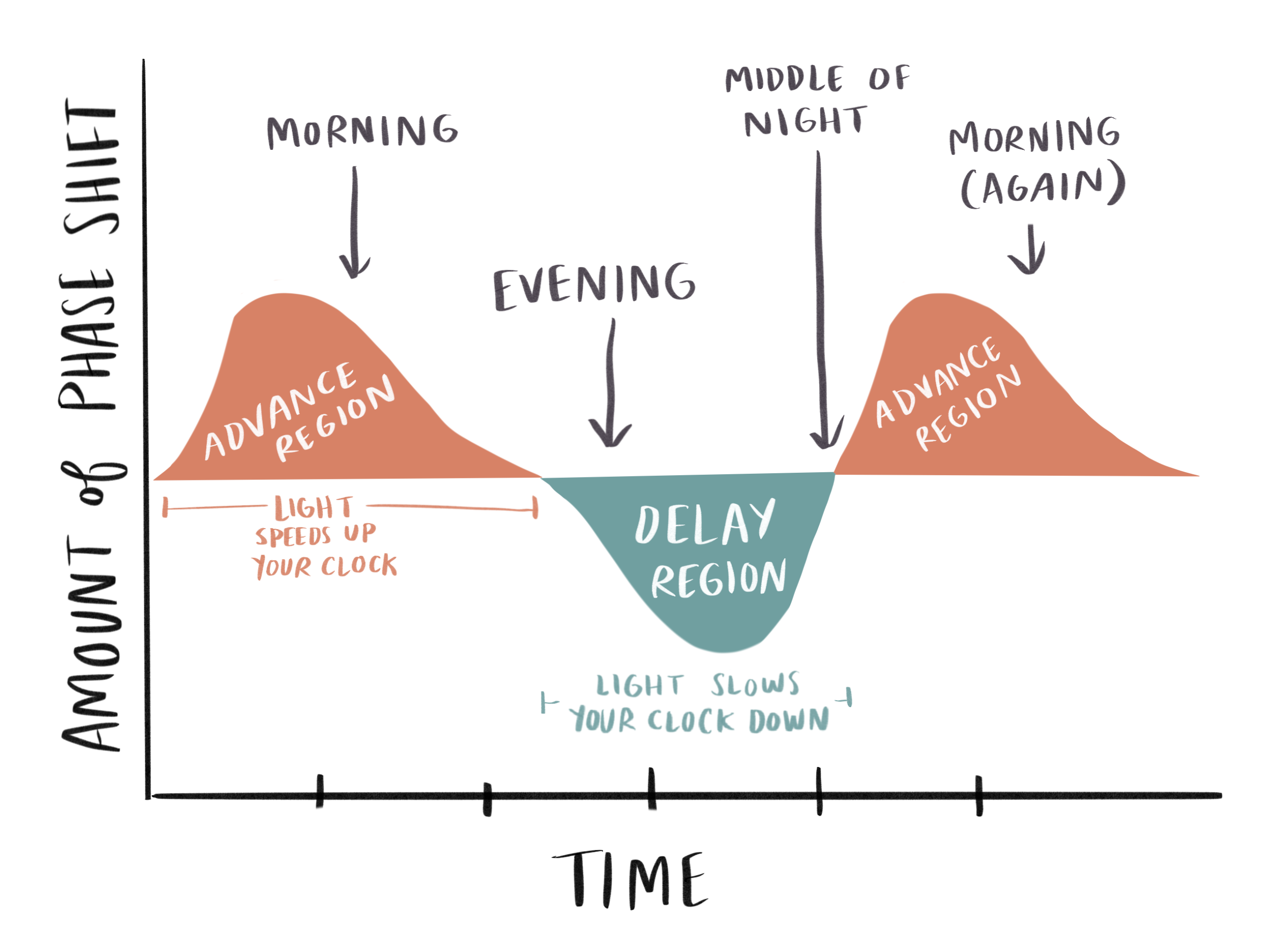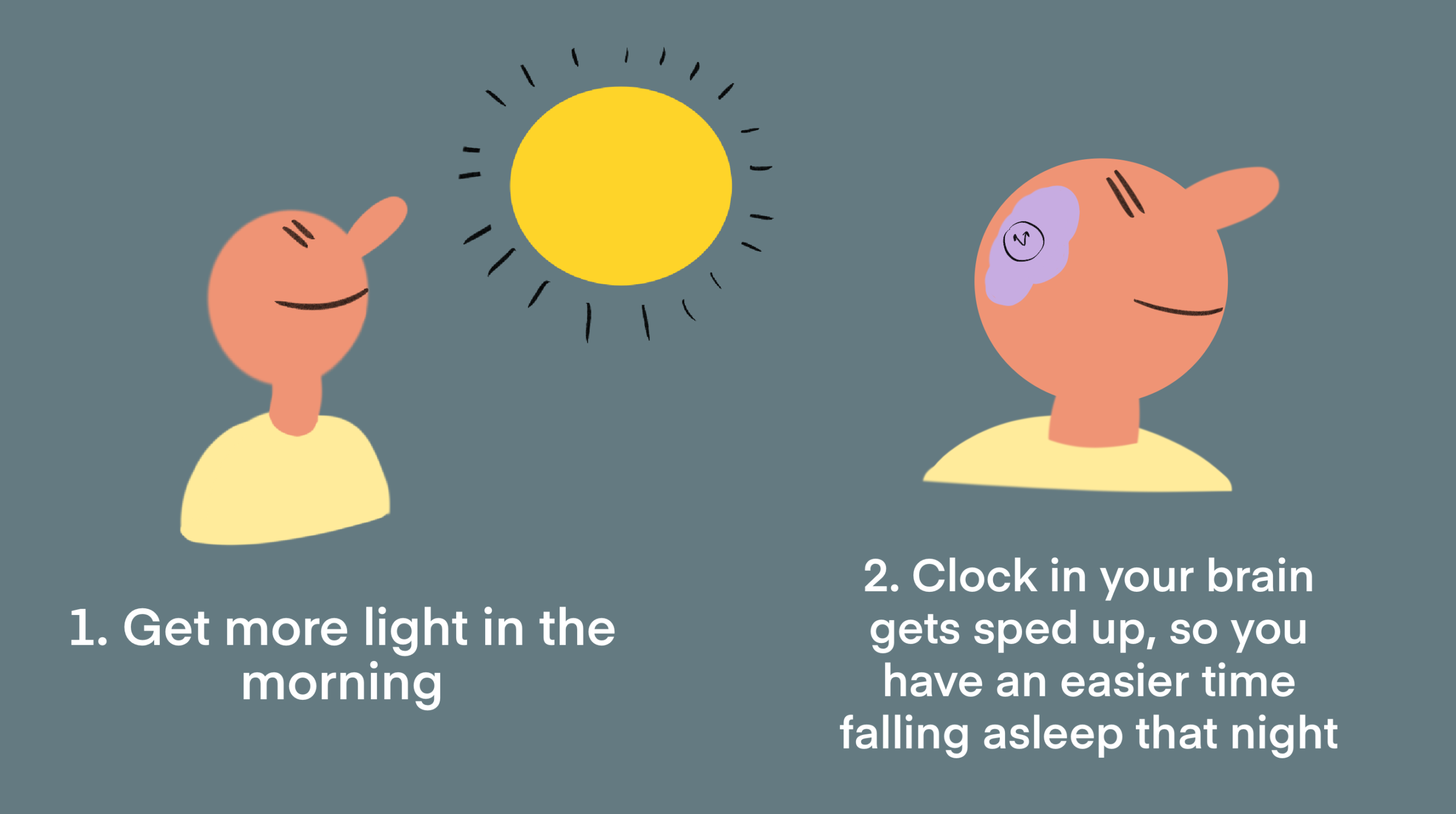No, we shouldn’t make DST Permanent
I recently got some blackout curtains for my bedroom. This was pretty long overdue: about thirty feet from my bedroom window is a cheerfully bright, energy-efficient street lamp, which—while great when I’m taking the dog out for a nighttime stroll—is the photic equivalent of somebody standing in my azaleas and playing “Seventy-Six Trombones” while I’m trying to sleep.
I’ve definitely started sleeping longer since I’ve gotten them. But I’ve also noticed that they’ve made it so I need to be even more careful about my other sources of light at night. The reason? They don’t just block my light at night. They also block light in the morning.
I’m thinking about this because it’s almost the end of daylight saving time, and, once again, there’s talk of making it permanent. As a quick guide: Daylight saving time (DST) is the one where the clocks move forward (so it’s lighter at night), while standard time is the one where the clock moves back (darker at night). The “Sunshine Protection Act”, introduced by Florida senator Marco Rubio, encourages states to observe a permanent version of DST, with the argument being that lots of good things could come out of just chilling it with the time change.
Permanent daylight saving time means not having to change the clocks, and not having to experience that gnarly “lose an hour” in the Spring. It means no confusion about how many hours offset we are from the time in the U.K. and no struggling to remember if you should say EDT or EST when you’re trying to coordinate a Zoom meeting across time zones. As a programmer, I’m generally in favor of anything that makes the totally miserable experience of interacting with dates and times in code even marginally easier.
But it also means—and I’m talking about permanent daylight saving time here—lots and lots of dark in the mornings.
This is bad. It’s bad because light at night is fundamentally different from light in the mornings, because our bodies are fundamentally different at night than they are in the mornings.

Light in the morning does a couple things, but one of the most important ones is that it “advances” our circadian rhythms. It tells our internal clock that night is over and it’s time to get a move on. It makes it easier to fall asleep at night.
And if you get a lot of light in the morning, it eventually advances you to the point where… it stops advancing you. You enter the part of your daily rhythm where light delays your clock. A sort-of “slow down, what’s the rush” period of your internal rhythm that starts in the mid-afternoon for most people and continues into the early morning.

And that slowdown period is the problem. Because while light in the morning is hitting you in the advance region, which you eventually get advanced out of, light at night is hitting you in the delay region, which is like a temporal sand trap. When you get light exposure in the delay region, your clock gets slowed down, which means you spend more time in the delay region. Which means you don’t feel tired as quickly, which means you get more light, which means you spend even more time in the delay region. It’s a feedback loop that spins out of control. It might be the reason that night owls exist.

So if we adopt permanent DST, we’re adopting a schedule where we get more light during the hours most people call night, and much less light in the hours we consider morning. We’re setting ourselves up to fall into the delay region sand trap: More light in the night, making us stay up later and get delayed, and far less light in the AM hours to counteract it.
This is what tanked permanent DST the first time we tried it. I’m not sure why this doesn’t always get brought up as the very first point against permanent DST, but we’ve totally done it before. In 1973, anywhere from 57-73% of people supported staying on DST during the winter. So they did it, in January of 1974. By the time February and March rolled around, only 19-30% of people still thought it was a good idea, while 43% said it was actively bad.
What changed? People experienced what happens to your body when you have to kick off your day in the dark of night. They drove to work and caught the bus to school, while the sun waited to rise until 8:00 am. They didn’t like it, and rolled the decision back before the next winter came around.
You might say, “well, time is a fake idea. Who says you have to start your day before 8:00 am?” This is a fair point. We could, societally, shift the normal times we do things to match whatever schedule we wanted. In China, where the entire country is on the same time zone, places like Kashgar (in the far west) have shifted their normal operating hours to reflect the fact that the sun might not come up until 10 am.
But it’s a lot tougher to change social standards of when school and work “should” start in every town in the country than it is to pass a bill changing the time that appears on your phone. Which is why we shouldn’t do it: Permanent DST will put us on schedule where our traditional social standards for when things should happen are at odds with our biology, sabotaging our sleep and circadian health.
If we want to stop the whiplash of changing the clocks twice a year, why not do permanent standard time? I’m in favor of this. It reduces confusion the same way permanent DST does, but without the corresponding damage to our internal rhythms. Sure, it might mean that 9:00 pm is dark, even in the summer. But darkness at the right times is a healthy thing. And from a safety perspective, there are lots of street lamps and other sources of light at night these days that are very good at their jobs.
Which brings it back to me and my blinds: I’ve needed to be more careful about my other sources of light at night lately because my blackout curtains mean I don’t get woken up by the sun. That’s not a big problem: I can wake up in the dark and yank them open myself, like one of the townsfolk in the first song in Beauty and the Beast.
But if I get too much light at night from non-streetlamp sources, like watching Succession on my computer or looking at Succession memes on my phone, my ability to wake up in the dark in the morning is going to be less reliable, jeopardizing my exposure to that vital morning light. And I’m lucky that there’s even morning light to get: with permanent DST, I could be hopping on my first calls of the day while the sky is still black outside.
My point is that social pressures already make it hard for us to get the darkness we need at night (let’s face it, screens are fun) and the light we need in the morning. We shouldn’t make it harder for ourselves with a change to a system that’s already failed once. Permanent daylight saving time is a no-go. Permanent standard time? Call me.
